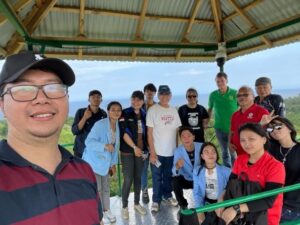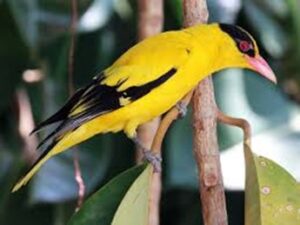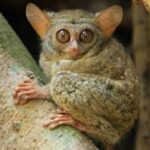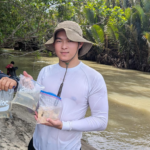May 19th, 2024
 One of the important activities besides restoring biodiverse forests in Temboan is to do accurate assessments of the results of our project. Beside monitoring the forest restoration and hydrology we also monitor the biodiversity. Since last year biodiversity is officially recognized in the form of biodiversity credits. Here we present some of the ongoing work in Temboan. The biodiversity program is supported by various institutions and many local students.
One of the important activities besides restoring biodiverse forests in Temboan is to do accurate assessments of the results of our project. Beside monitoring the forest restoration and hydrology we also monitor the biodiversity. Since last year biodiversity is officially recognized in the form of biodiversity credits. Here we present some of the ongoing work in Temboan. The biodiversity program is supported by various institutions and many local students.
Birds
 William is responsible for bird monitoring in Temboan. He has an exceptional visual and acoustic memory. Besides regular direct observations in various locations within the project area he also collects information from the workers and local people by evaluating their observations and descriptions with his own as well as verifying distribution of species in Sulawesi.
Since the start of the project he has observed gradual increases in bird species as well as number of individuals and their frequency. In the past there was hunting pressure from local youth using air riffles and poaching. In the beginning we removed bird nets and closed off the area for hunters. Since then species like the oriole have come back spectacularly and we now have a list of more than 85 bird species. William also observed the presence of species that were not yet recorded on Sulawesi such as for instance the Asian Koel (Eudynamys scolopaceus). We are also collecting information on their preferred habitat inside the area, their hours of activity, flock size, etc.
William is responsible for bird monitoring in Temboan. He has an exceptional visual and acoustic memory. Besides regular direct observations in various locations within the project area he also collects information from the workers and local people by evaluating their observations and descriptions with his own as well as verifying distribution of species in Sulawesi.
Since the start of the project he has observed gradual increases in bird species as well as number of individuals and their frequency. In the past there was hunting pressure from local youth using air riffles and poaching. In the beginning we removed bird nets and closed off the area for hunters. Since then species like the oriole have come back spectacularly and we now have a list of more than 85 bird species. William also observed the presence of species that were not yet recorded on Sulawesi such as for instance the Asian Koel (Eudynamys scolopaceus). We are also collecting information on their preferred habitat inside the area, their hours of activity, flock size, etc.
Mammals
 We have not done any trapping and detailed monitoring of mammals yet while awaiting students from Manado’s UNSRAT university to join the fieldwork but there are already an increasing number of observations on mammals returning to the Temboan rehabilitation area. For instance for the first time we encountered a group of Tarsiers, something none of the local people ever saw before. Even more special they appeared inside our three year old planted forest. Also, after an absence of 30 years the wild boar has returned to the area, sometimes causing damage to the newly planted trees looking for worms in the organically fertilized planting holes. We have various species of bats, shrews and rodents. We have some natural caves with bats but our manmade caves have also already been colonized by bats.
We have not done any trapping and detailed monitoring of mammals yet while awaiting students from Manado’s UNSRAT university to join the fieldwork but there are already an increasing number of observations on mammals returning to the Temboan rehabilitation area. For instance for the first time we encountered a group of Tarsiers, something none of the local people ever saw before. Even more special they appeared inside our three year old planted forest. Also, after an absence of 30 years the wild boar has returned to the area, sometimes causing damage to the newly planted trees looking for worms in the organically fertilized planting holes. We have various species of bats, shrews and rodents. We have some natural caves with bats but our manmade caves have also already been colonized by bats.
Fish
We have through Prof. Alex Masenge, advisory board member of Masarang, started a cooperation with the Sam Ratulangi University and University of Nagasaki on fish species in our streams and brackish lakes. Amazingly during the first joint field visit and fishing exercise three (!) new species of gobies were discovered. We have already reported the finding to the national Indonesian research institute BRIN that will contribute to support the follow up study on these new species financially as well as with their researchers. Below are some pictures of the field work. In addition to that Prof. Janni Kusen of the ITM University is studying coral rehabilitation together with students from ITM and UNSRAT. This includes the fish species and their numbers. The work involves surveys on bathimetry, stream direction, fish diversity, gabions for reducing beach aberration and growing new corals using the biorock methodology.
Prof. Alex Masenge with one of the three new gobi species. On the right his Japanese counterpart. Below our new boat sponsored by Dr. Manfred Krieger and the special fishing net that yielded the three new gobi species. The boat will also be used for the coral restoration and monitoring work.

Prof. Alex Masenge with one of the three new gobi species. On the right his Japanese counterpart. Below our new boat sponsored by Dr. Manfred Krieger and the special fishing net that yielded the three new gobi species. The boat will also be used for the coral restoration and monitoring work

Insects, amphibians, reptiles
The work on these three groups is only starting this year and we are awaiting students to be involved in the fieldwork. The local people and workers do however report that the number of frog calls and cicadas has increased much. They also notice that there are now butterfly species they have never before seen. We hope to report much more in the near future.
Supporters
The biodiversity work is supported by various persons from around the world without we would not be able to conduct this work. Nicolas Moulin is supporting the coral restoration and monitoring work, Dr. Manfred Krieger for the turtle work, the TreesForAll foundation for the bioacoustics and by our own Masarang Foundation. To all our most sincere thanks!
Leave a Reply